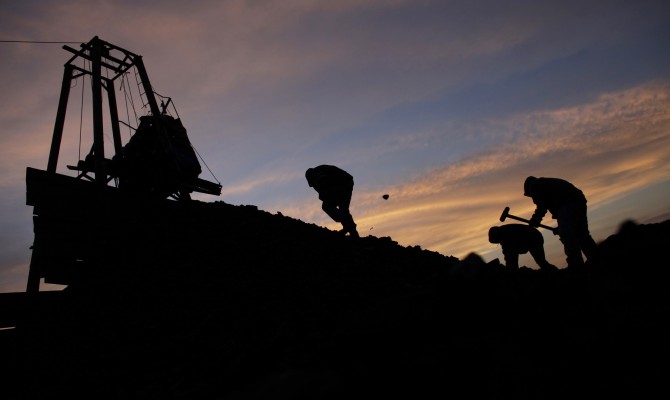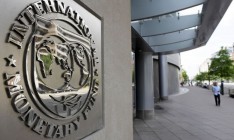Business
resourcesUkraine has a geological trump card, but does not use it in order to fool its investors

In the depths of our country there are nearly one hundred types of minerals, the market value of which, according to scientists, is estimated at US $7.5 trillion. Ukraine’s base of mineral resources consists of 20,000 deposits and ore occurrences, of which 7,800 are explored and only 3,300 are being developed. Traditionally, Ukrainian enterprises mine iron, manganese, uranium, ilmenite ores, coal, natural gas, oil (and its condensate), zircon, kaolin (and clays), salt, graphite, non-metallic raw materials for metallurgy, cladding and building stones, mineral water and precious and non-ferrous metals.
Noteworthy, Ukraine’s mining industry is underdeveloped: only few industries (metallurgy, production of cement and petroleum) may boast of full production cycles (from mining to manufacturing of end products). Some need the last processing stage (for example, while having a strong resource base, the titanium industry does not produce titanium mill products), others need extracted raw materials. For example, to ensure full operation of nuclear power capacities, which produce half of the electricity in the country, production of uranium must be tripled.
At the dawn of independence Ukrainian officials discouraged international investors wishing to invest in mining. Since then the trust has not been restored – foreigners only agree to engage in production of hydrocarbons in our country.
Mismatch
Actually, mining and processing of mineral resources have always been at the heart of Ukraine's economy, but in recent years their value has substantially increased. Whereas in the early 1990s development of mineral resources provided for 23 – 25% of GDP and one-third of foreign exchange earnings, nowadays operation of the resource base provides for 42% of GDP and two-thirds of foreign exchange inflows. This happened not because foreign investments flooded the development of mineral resources. At the beginning of the 1990s industrial processing sectors simply had a larger share of the national economy. Head of the Department of Mineral Resources at the Institute of Geological Sciences of Ukraine Leonid Haletskiy says that in developed countries the role of the mining sector in the economy is deliberately limited.
In terms of increased importance of the mining industry for the Ukrainian economy it is currently at large in the stage of deep stagnation. The extraction of resources compared with the peak of the 1970s dropped by the middle of the 1990s and has remained at this level. While in 1975 Ukraine produced 123 mn t of iron ore, 215.7 mn t of coal, 68.7 bn cubic m of natural gas, 12.8 mn t of oil and 6.5 mn tons of manganese ore, in 1995 production levels for ore and coal decreased by 2.5 times (to 50.7 mn t and 83.8 mn t, respectively), gas – by 3.8 times (up to 18.2 bn cubic m), oil – by 3 times (up to 4.1 mn t) and manganese ores – by 2 times (to 3.2 mn t).
Exception
The iron ore segment stands out from the general trend: over the period of 1995 – 2013 production of iron ore increased by almost 70%. But this sector also bears a hidden threat. “Today, the fundamental law of mining is violated: the increase of mineral reserves should outpace the volume of their production,” says Haletskiy. “And currently almost no one is involved in the buildup of reserves”.
Ukraine uses iron ore deposits, which were explored and prepared for development back in the 1980s. Certain metallurgical enterprises are provided with iron ore for the next 10 – 120 years, on average – 50 – 60 years, according to the Institute of Geological Sciences. “Measures should be taken to replenish stocks of iron ore for the future prospects of development of the steel sector,” believes the expert. In other words, enterprises should invest in exploration and development of new fields, especially so that they are sufficient and there are materials left to spare all over the country. In Ukraine there are 80 deposits of iron ore (32 bn t of ore, which accounts for 6% of global reserves), of which only 30 are in operation. The largest developed fields include Inhuletske (reserve of 1.1 bn t of ore), Pervomaiske (989 mn t), Skelevatske (760 mn t) and most mines in the iron ore basin in Kriviy Rih oblast. The undeveloped fields are Belanivske, Kremenchukske, Popelnastivske, Skhidnonovalyavkinske, Pereverzevske, Pivnichnobilozerske, Proletarske, Orekhivske, etc.
Arrival
Analysts and scientists argue that Ukraine is developing its potential in raw materials in one dimension. By producing a limited amount of minerals used in the “coal – iron ore – steel” chain, the Ukrainian industry left reserves of rare metals untouched. At the same time, Ukraine failed to catch up with such major extractors of iron ore as China, Brazil and Australia (which extract two-thirds of iron ore mined in the world) due to the lack of large-scale investments. World commodity giants – Australian companies BHP Billiton and Rio Tinto or Brazilian Vale – prefer to invest in any production of ore, except for Ukraine’s deposits.
Among the latest iron ore projects worth mentioning are Rio Tinto’s plans to master the world's largest iron ore deposit Simandou located in Guinea and invest US $20 bn into it (including construction of railway communications and a port). It appears that in comparison with the Ukrainian investment climate, the African climate is more attractive for investors (even considering the protracted legal battle between Rio Tinto and Vale for the right to develop the Guinean deposit).
However, experts do not expect any arrival of powerful foreign investors to the iron ore segment. Ukrainian metallurgical financial and industrial groups simply do not allow them to enter the market. “Ukrainian companies are interested in mining iron ore,” says Director of the Ukrpromvneshekspertiza SE Volodymyr Vlasyuk. “This obviously explains the unresolved issues of processing of oxidized ores and commissioning of the Kriviy Rih Oxidized Ores Mining and Processing Plant, which was of interest for the global steel giant Arcelor Mittal and the Chinese company SinoSteel”.
We should also recall activities of the Canadian company Black Iron, which has been trying to start production of iron ore in the Shymanivske (reserve – 645.8 mn t) and Zelenivske fields (reserves are still being estimated; both are located in the Dnipropetrovsk oblast). It became possible to set the project in motion (in particular, the company had problems with allocation of land plots around Shymanivske field, which substantially deprived the investor of any prospects for its development and jeopardized its license for development) only after Rinat Akhmetov’s Metinvest got involved in it. Last summer Metinvest acquired a 49% stake in Black Iron for US $20 mn (by 2018 the enterprises intend to commence industrial extraction of ore). “I look forward to close cooperation with Metinvest,” said Matt Simpson, CEO at Black Iron. “Together we can build a new world-class mining production sector in Ukraine”. The total cost of the project for development of those fields is estimated at US $1.094 bn.
Withdrawal
Ukraine gained the reputation of an unreliable partner among international mining companies back in the 1990s. “10 – 15 years ago global mineral companies came to Ukraine,” says Haletskiy. “I brought some of them myself”. For example, Zakar Resources LTD, Korab Resources Ltd, Supatcha Resources Inc, Northland Power Inc., Aurora Pacific, ValGold Resources Ltd, CCI Holding Ltd, GEUS, Emerging Markets Investments, Yalta AG, DTP Terrassement and others were willing to invest in production of gold, diamonds, iron ore and energy resources…
All of them left empty-handed. “There is a non-public price for entering the market, which is included in projects,” says Yevheniy Tymoshenko, head of the Risk Management Department at the Integrites international law firm, commenting on the particularities of business in Ukraine. Usually, that is a kind of a “gross payment” after which a foreign company gets carte blanche for operation in the country. But that is how it works in more or less civilized countries, where officials guarantee investors the most favorable conditions in return for “non-public payments”. In Ukraine in the late 1990s even after stimulation of government officials it was impossible to achieve any results. “As soon as they could smell the money, Ukrainian authorities abruptly changed their tactics throwing investors out of the country, arguing that they had to develop those areas itself,” complains Haletskiy. As a result, the country remained back at the bottom of the ladder – without investors and without products.
The most spectacular example of this is the practice of attraction (and repelling) of capital in gold mining. In 1996 Ashurst Technology Corp. Ltd. created a subsidiary enterprise named Ashurst Resources International for development of Ukrainian gold-bearing mines. Under the agreement on joint activities and investments (signed with the state-owned Ukrzoloto CJSC in March 1997) the company was engaged in raising funds at stock exchanges in London and Toronto, as well as in the US OTC market. Ukrzoloto had the right to develop five fields (Serhiyivske, Klintsovske, Yuryevske, Balka Zolota and Balka Shyroka), located in the Dnipropetrovsk and Kirovohrad oblasts and estimated by geologists at approximately UAH 95 mn. According to the agreement, the Canadian company was supposed to get 20% in the newly established joint venture – Ukraine Gold International – upon condition of provision of approximately US $30 mn in investments.
But gold projects were blocked after then Prime Minister Pavlo Lazarenko resigned from the office. In October 1997, the new Prime Minister Valeriy Pustovoytenko liquidated Ukrzoloto on grounds of “poor activity in the economic experiment on attraction of private investments for development of the gold-mining industry”. Ashurst, in turn, sent the liquidation commission an official claim to the amount of US $4.1 mn (which still has not been granted).
Similar fate awaited gold in the Zakarpattya oblast. In 2003 the Muzhiyevske field (proven reserves of gold – 40 – 50 t, zinc – 300,000 t, lead – 700,000 t) was looked into by the Australian company Zakar Resources, which bought 6.3% of the shares in Zakarpatpolimetaly LLC (the rest of the shares remained in possession of the Ukrainski Polimetaly SJSC). The strategic development program assumed foreign investments of close to UA $70 mn and production of 1.5 – 2 t of gold per year. But the company managed to provide – and mine to use – only close to US $1 mn which was spent on extraction of 161 kg of gold in 2004 and 185 kg in 2005. At the end of 2006 production ceased due to lack of funding from the founders. The situation was a paradox: the state, which owned 93.7% of the shares, could not allocate the required money and the investor could provide financing, but would not do that having only 6.3% of the shares in the company.
In 2007, Executive Director of Zakar Resources Chris Barker announced the company’s readiness to invest US $100 mn on terms of changing the size of Zakarpatpolimetaly’s authorized capital and, consequently, increasing its share up to 75%. But the Ukrainian government was slow to meet the old investor halfway and considered the possibility of including some other company to the list of founding members of the LLC. In 2008 Artem Basmadzhan, then acting chairman of Ukrainski Polimetaly SJSC, told the press about the interest in development of gold mining expressed by the British European Minerals Corp. (EMC), which received support at the highest level. “President of Ukraine Viktor Yushchenko entrusted the Cabinet with a mission of providing assistance to the EMC and its representative – Svit LLC,” said Basmadzhan. As a result, Zakar Resources left Ukraine and Svit has never engaged in any development in Muzhiyevo.
“The classic situation for any mining project in a developing country such as Ukraine is that without support of public authorities, be they national or local, it is virtually impossible to implement projects, no matter how attractive they look on paper,” says Roman Topolyuk, analyst at the Concorde Capital. “Investors tend to attribute the possible loss of rights to develop the field to the risks threatening success of projects. However, if such risks arise in countries too often, the attitudes of investors towards them will be negative,” Topolyuk assured.
Such attitude was formed in relation to Ukraine. Corruption, commonplace illegal takeovers, lack of protection for investments and effective methods for defense of interests (including through court action) are the main reasons for the failures of foreign investors in Ukraine, says Executive Director of the Ukrainian Office at the Canada-Ukraine Chamber of Commerce Emma Turos. “In business environments where all companies are equal, but some are “more equal” than the others, returns should be very high,” says Turos, and Ukraine cannot boast of that. Besides, the mining industry requires large capital investments, which are usually attracted at stock markets, for example, at the Toronto Stock Exchange, specializing in placement of shares in companies representing the mining industry (57% of all public issuing companies engaged in mining are listed on this platform). “Such procurement of capital requires confidence for issuers in the first place,” emphasizes Turos. And if the company is unable to implement the project for which tens or even hundreds of billions of dollars were attracted, not only the issuer, but the whole country loses investors’ trust.
Expectations
Many analysts believe that Ukraine has already outgrown the era of primary accumulation of capital, the so-called wild capitalism. Arrival of such globally-known companies as Chevron, Shell and ExxonMobil to Ukraine indicates the formation of capital. Haletskiy says many foreign players are ready to return to the Ukrainian market and work in the new economic environment (at least this was announced at the Ukraine – Canada 2014 economic forum, which took place in Lviv on May 28 – 30).
“Our country can potentially attract approximately US $2 – 3 bn in investments for mining and enrichment of hard minerals,” predicts Vlasyuk. Tymoshenko is convinced that in the long-term the inflow of investments may increase from a few billion to tens of billions of dollars. Australia, for example, annually receives an average of approximately US $200 bn of investments to develop its mining sector (i.e. capital cost of projects, excluding taxes and charges).





 of the agreement of syndication with Financial Times Limited are strictly prohibited. Use of materials which refers to France-Presse, Reuters, Interfax-Ukraine, Ukrainian News, UNIAN agencies is strictly prohibited. Materials marked
of the agreement of syndication with Financial Times Limited are strictly prohibited. Use of materials which refers to France-Presse, Reuters, Interfax-Ukraine, Ukrainian News, UNIAN agencies is strictly prohibited. Materials marked  are published as advertisements.
are published as advertisements.